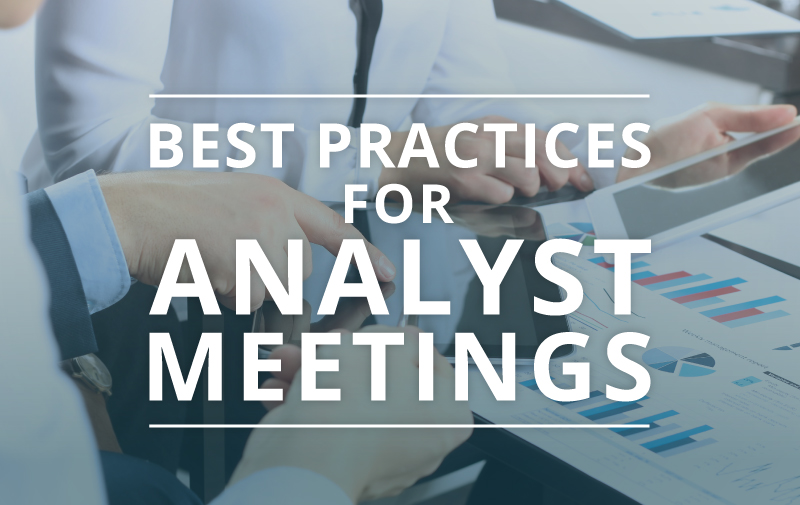There are a variety of options for a company when it comes to analyst and investor events – full or half-day meetings on a standalone basis, formal meetings at industry tradeshows, or smaller roundtable events. If orchestrated well, Analyst Meetings can effectively improve a company’s perception, increase Wall Street awareness and understanding, and generate investor support.
Many large and mid-cap companies host Analyst Meetings annually as a matter of course. Often, the subject matter will rotate so that each year there is a deep-dive on a business segment. For small-cap and emerging growth companies, this strategy may not make sense, as material could be repetitive and resemble the standard management presentation given at an investor conference.
So what defines a successful Analyst Meeting? What parameters should be considered when deciding when to host one and what content to include? Here are five key tips to consider when hosting an Analyst Meeting:
1 | Establish a goal. An analyst event is an opportunity to communicate a tailored message to Wall Street outside the cadence of quarterly earnings calls. Therefore, it is important to clearly define the takeaway message from the event.
- Is your goal to have Wall Street better understand a particular business division or product pipeline?
- Are you outlining the competitive landscape and defining your advantages?
- Do you have new clinical data or technology to highlight?
This focus will drive content, speaker selection, and possibly even the timing and location of your event.
2 | Schedule the event to maximize attendance. Select a date that avoids overlap with competing events, as well as a location that will be convenient for your target audience.
- If your headquarters are overseas or outside the country where your stock is listed, consider doing an investor day in the country of your listing
- Capitalize on the investment bank conference schedules, and look to schedule meetings in the days before or after the conference with investors that will be traveling to a location for multiple days
3 | Plan ahead. Start planning 3-6 months ahead. Create a task list and timeline to ensure all details are confirmed before the event.
This list should include, but is not limited to:
- Reserving the venue and related logistics
- Confirming outside speaker availability
- Creating an invitation list
- Sending a save the date and invitation
- Creating slide decks
- Ordering a webcast (if webcasting)
- Planning leave-behind materials
- It is also important to plan a rehearsal to avoid AV or venue-related glitches
4 | Include outside speakers or internal leaders that are new to Wall Street. Analyst events are excellent opportunities to highlight company contributors who interact less frequently with Wall Street; they provide both a fresh perspective and a fresh face for your audience. These contributors can include members of your management team or physicians involved at a clinical or commercial level. Because these new speakers interact with Wall Street less frequently, this is a good opportunity to review SEC Regulation Full Disclosure guidelines as well as the company’s disclosure policy, in order to avoid inadvertent release of non-public material information.
5 | Keep a tight agenda that packs a punch. Investors and analysts are busy; we have found that the most successful Analyst Meetings hosted by emerging growth companies have a targeted agenda that moves through presentations in under two hours, including time for Q&A. Planning a tight agenda ensures that your most important points are highlighted during the meeting.
Conclusion
In conclusion, there are a lot of important factors to consider when planning Analyst Meetings. Key items to consider are what your overall goals are and what will be the most impactful and efficient way to relate these goals to your investor and analyst audience. Be thorough in your preparation, scheduling and rehearsing. Implementing these key considerations in your next meeting will help achieve your company’s goals and increase Wall Street awareness.
Carrie Mendivil, Principal


Leave a Reply